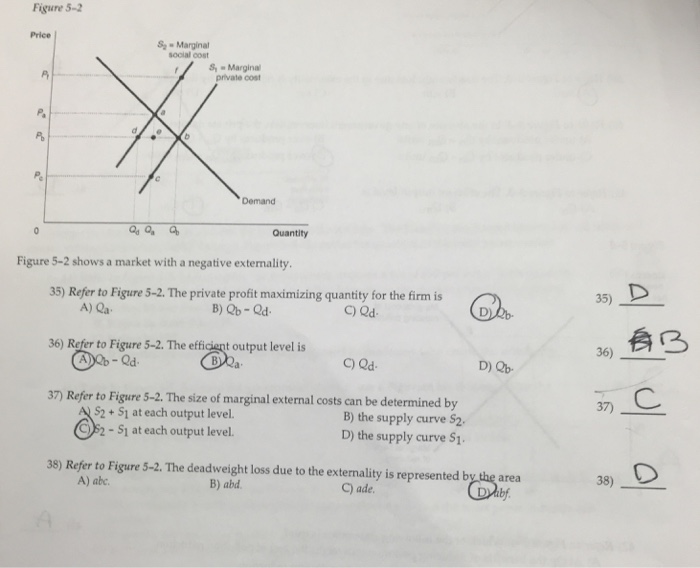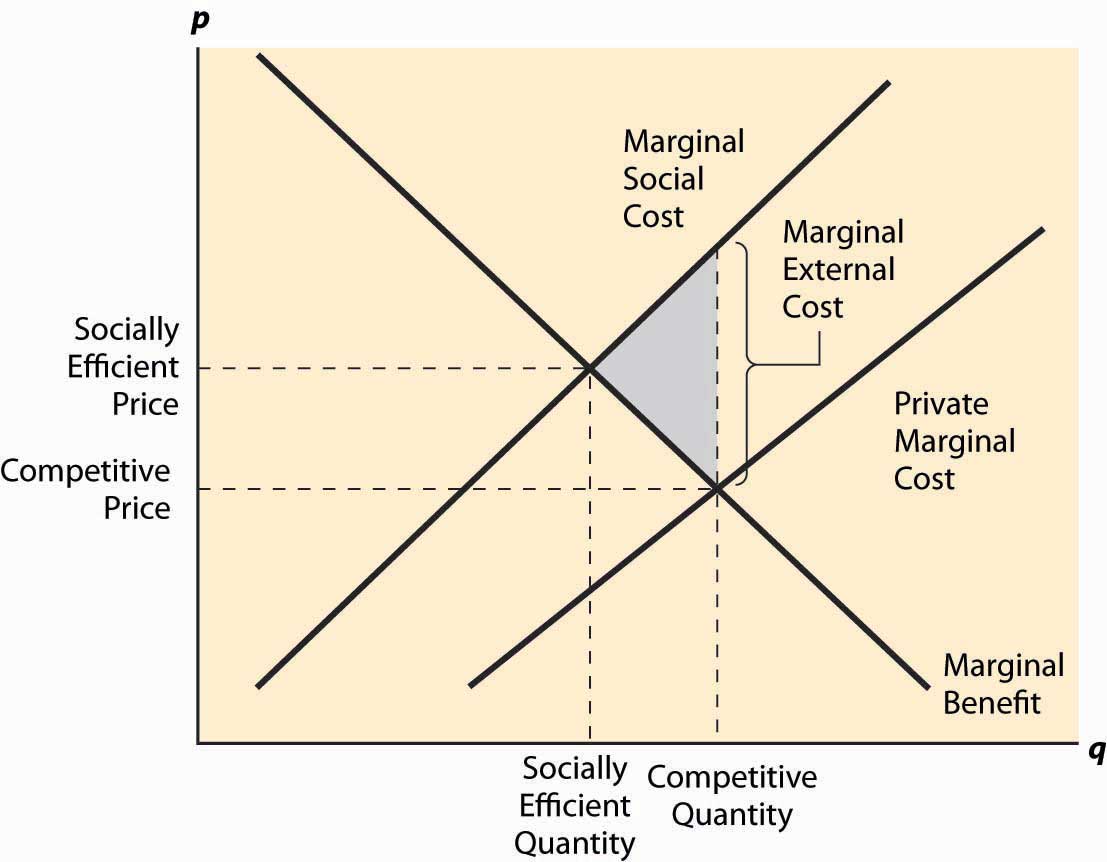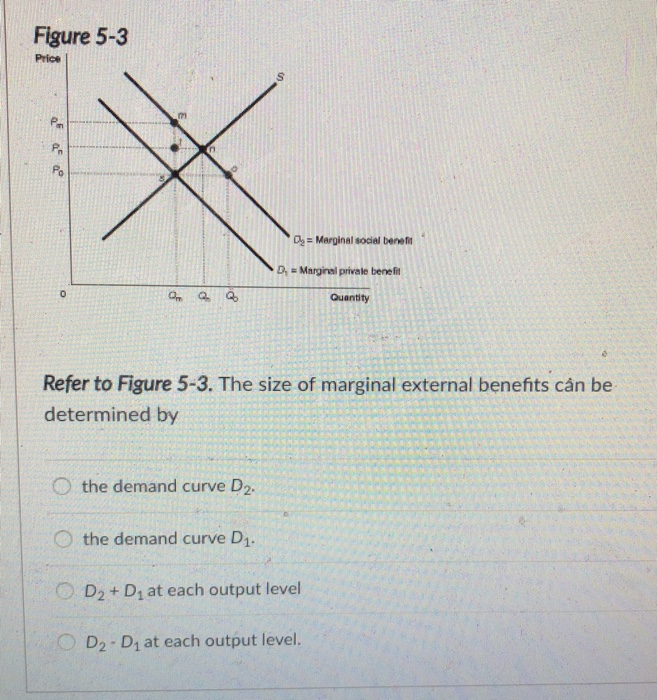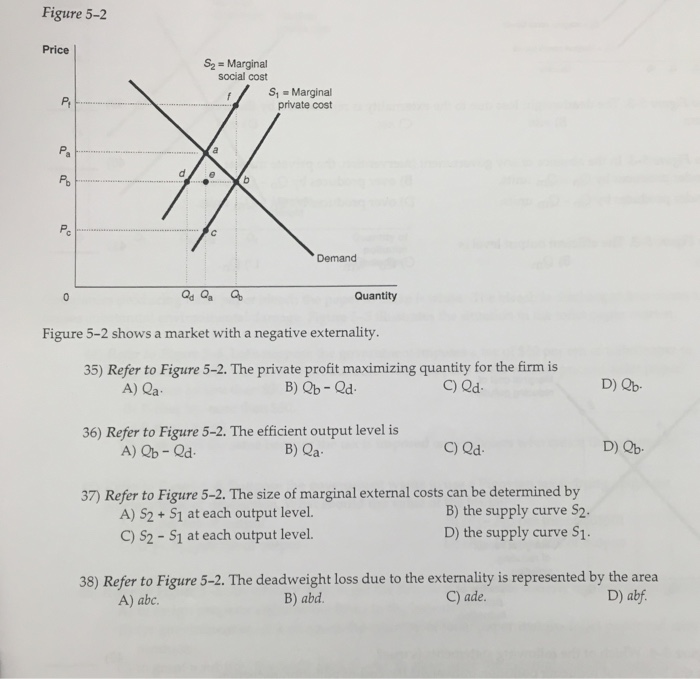The Size of Marginal External Costs Can Be Determined by
C the supply curve S. This measures the size of the external benefit that will be realised from third-parties if the amount of goods consumed rises to the socially optimal amount ie.

Solved The Private Profit Maximizing Quantity For The Firm Chegg Com
Variable Costs Variable costs are expenses that vary in proportion to the volume of goods.
. C the supply curve S2. It is calculated by taking the total change in the cost of producing more goods and dividing that by the change in the number of goods produced. D the demand curve D1.
The size of marginal external costs can be determined by A the supply curve S 2. The size of marginal external costs can be determined by S2 - S1 at each output level. MEC MSC - MPC This is the margianl external cost formula.
Thus MSC MPC MEC. The size of marginal external costs can be determined by A S2 S1 at each output level. Visually the MSC curve is raised higher than the MC curve or MPC curve if you prefer by the height of the MEC curve at each point.
11 Refer to Figure 5-3. Refer to Figure 11. As the quantity of labor increases while the amounts of other inputs are held constant marginal product of labor will.
Marginal cost represents the incremental costs incurred when producing additional units of a good or service. The marginal benefit of the last unit produced is represented by the price Pb. It is the opposite of a dead weight loss triangle.
The size of marginal external costs can be determined by FOORQUIZ Refer to Figure 5-2. Marginal social benefits D2 is above Marginal private benefits D1 sliding on the Supply curve. The total of private and external costs equal the social costs associated with production SC PC EC.
At the competitive market equilibrium for the last unit produced A the size of the external cost is Pn - Po. Refer to Figure 4-9. B the size of the external benefit is Pn - Po.
Below is a diagram to highlight the external cost that is present in a market with a negative produc tion externality. In the case of constant costs the marginal social cost curve for Q is MSC MPC MEC. The size of marginal external costs can be determined by A S2-S1 at each output level Refer to Figure 4-9.
The true marginal cost of the last unit produced is represented by the price D Pf A market supply curve reflects the. Refer to Figure 4-9. The demand curve D 1.
Refer to Figure 5-2. Assume that this is a competitive market. Q1s external costs are equal to area C d e f g h.
The size of marginal external benefits can be determined by Select one. The additional cost imposed on third parties by producing an extra unit of a good or service. Below is a diagram to highlight the external benefit that is present in a market with a positive consumption externality.
The size of marginal external costs can be determined by A S2 S1 at each output level. D S2 S1 at each output level. The figure above represents the market for pecans.
Refer to Figure 5-2. The deadweight loss due to the externality is represented by the area Amso. B S 2-S 1 at each output level.
The additional external cost of producing an extra unit of output is the marginal external cost. In our example the gain by external agents is indeed larger than the loss to private agents de e. Helping business owners for over 15 years.
The cost may be negative or positive. The additional cost of producing one more unit of a good or service is the marginal private cost. The size of marginal external benefits can be determined by A the demand curveD2 BD2 D1at each output level CD2- D1at each output level.
The true marginal cost of the last unit produced is represented by the price Pf. Estimating externalities in practice is much harder than in theory since marginal cost and marginal benefit curves are not fully observed very often and since the process of estimating can be met. D 2 D 1 at each output level.
B S2 - S1 at each output level. The marginal benefit of the last unit produced is represented by the price B Pb Refer to Figure 4-9. The size of marginal external benefits can be determined by.
Figure 5-2 shows a market with a negative externality. The private profit maximizing quantity for the firm is. B the supply curve S1.
D S S at each output level. D the demand curveD1. A market supply curve reflects the.
The marginal benefit of the last unit produced is represented by the price Pb Refer to Figure 5-2. The size of marginal external costs can be determined by S2 - S1 at each output level. Q b- Q d.
To determine whether this is a Potential Pareto Improvement we need to find out whether the gains from the winners exceed the losses to others. D 2 D 1 at each output level. The demand curve D 2.
The true marginal cost of the last unit produced is represented by the price Pf A market supply curve reflects the. A D2 D1 at each output level B the demand curve D2. Remember when looking for external costs we are looking under the MSC curve but above the MPC curve.
C D2 D1 at each output level. This measures the size of the external cost that will be realised from third-parties if the amount of goods. Marginal External Cost Formula A simple rearrangement transposition of the equation above gives us the result that.
D the supply curve S1. C the supply curve S2.

7 1 External Effects Social Sci Libretexts

Solved Figure 5 3 Price D Marginal Social Bene Dmarginal Chegg Com

Solved Figure 5 2 Shows A Market With A Negative Chegg Com
![]()
Education Resources For Teachers Schools Students Ezyeducation
Comments
Post a Comment